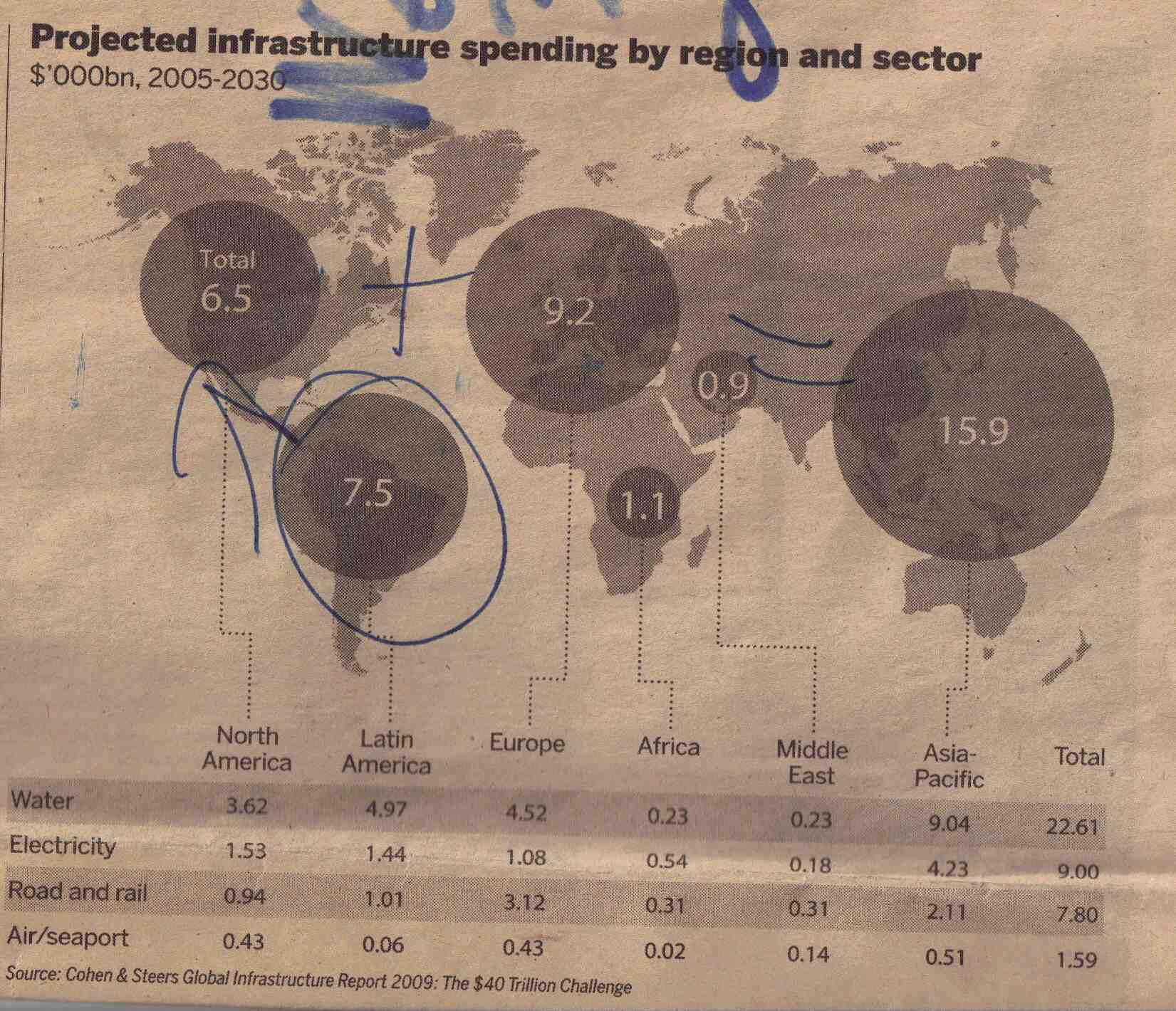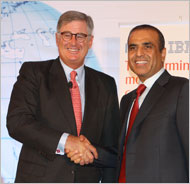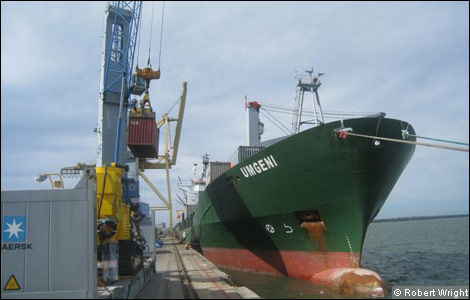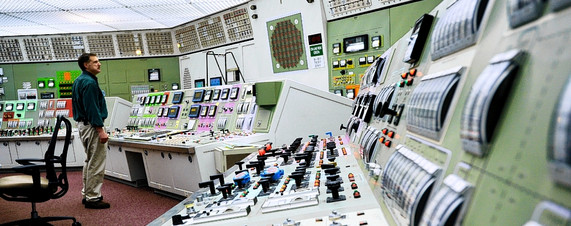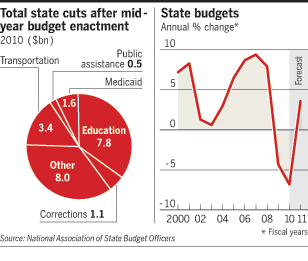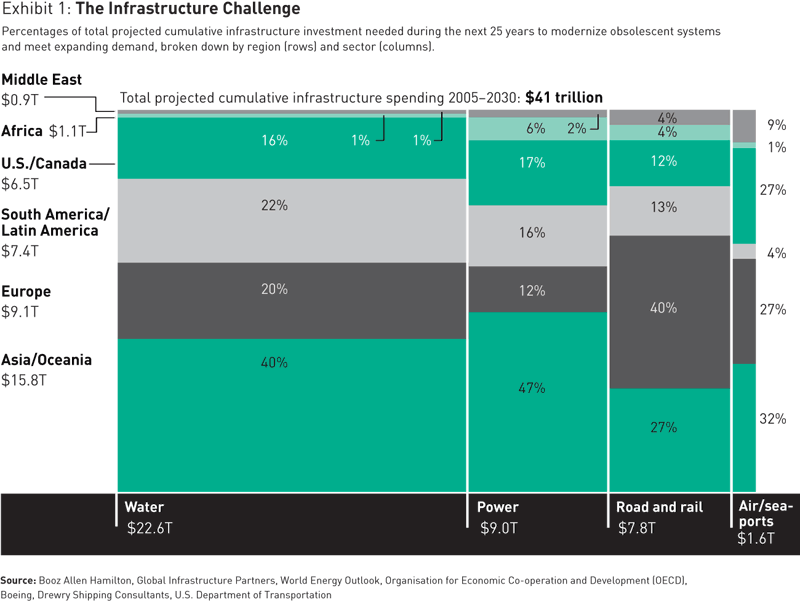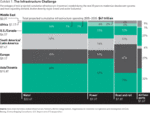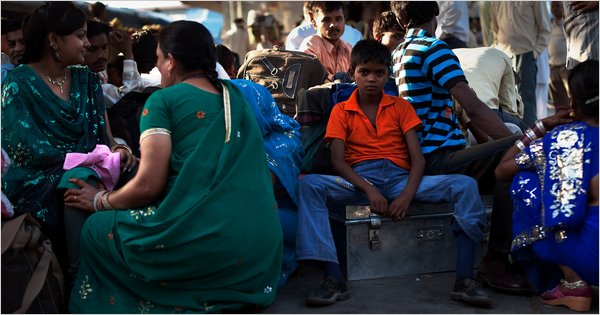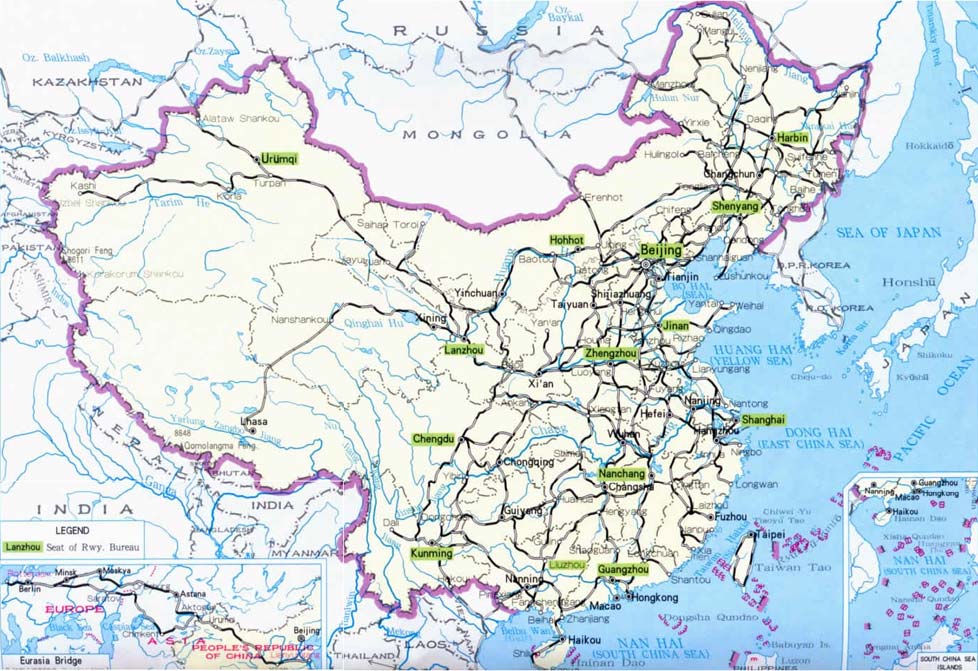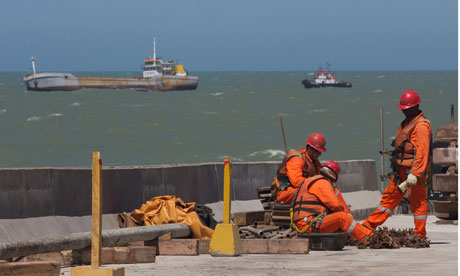 Guardian piece via WPR's Media Roundup.
Guardian piece via WPR's Media Roundup.
Top of the story:
Blades slicing through the morning heat, the helicopter rose from the tarmac and swept into a cobalt sky, high above Rio's Guanabara Bay.
It powered north-east over deserted beaches, dense Atlantic rainforest and fishing boats that bobbed lazily in the ocean below. Then finally, 80 minutes on, the destination came into view: a gigantic concrete pier that juts nearly two miles out into the South Atlantic and boasts an unusual nickname: the Highway to China.
Dotted with orange-clad construction workers and propped up by dozens of 38-tonne pillars, this vast concrete structure is part of the Superporto do Acu, a £1.6bn port and industrial complex that is being erected on the Rio coastline, on an area equivalent to 12,000 football pitches.
Reputedly the largest industrial port complex of its type in the world, Açu is also one of the most visible symbols of China's rapidly accelerating drive into Brazil and South America as it looks to guarantee access to much-needed natural resources and bolster its support base in the developing world.
When Acu opens for business in 2012, its 10-berth pier will play host to a globetrotting armada of cargo ships, among them the 380-metre long Chinamax – the largest vessel of its type, capable of ferrying 400,000 tonnes of cargo.
Millions of tonnes of iron ore, grain, soy and millions of barrels of oil are expected to pass along the "Highway" each year on their way east, where they will alleviate China's seemingly unquenchable thirst for natural resources.
"This project marks a new phase in relations between Brazil and China," Rio's economic development secretary, Julio Bueno, said during the recent visit of about 100 Chinese businessmen to the port complex, which is being built by the Brazilian logistics company LLX and should receive billions of dollars of Chinese investment.
This new phase of engagement with Brazil and South America, is part of China's "going out strategy" – an economic and, some say, diplomatic push for Chinese companies, many of them state-run, to invest abroad, snapping up access to minerals, energy and food by pouring the country's colossal foreign reserves into overseas companies and projects.
Ah, I thought we were going to fight the Chinese for access to all these resources, when it turns out China can just buy them and Brazil is more than happy to sell them in bulk on long-term contracts.
Where do they come up with these devious tricks?
"What, no f--king assassin's mace?" A.J. whines to Carm and Tony. Disgusted, he surfs off the History Channel over to MTV.
And an entire continent falls to the Chinese, because, as everyone in America knows, if you're the biggest buyer of South American commodities, everybody down there obeys your every wish and command!
 Monday, December 21, 2015 at 1:07PM
Monday, December 21, 2015 at 1:07PM  NATIONAL SECURITY, AS A BUSINESS DOMAIN, IS DRIVEN BY THE MANTRA OF "BE AFRAID, BE VERY AFRAID. When we're just talking among ourselves, the conversation remains professional. But there's always that temptation to go all apocalyptic when you take those conversations into the public realm. It's the old if you only knew what I know trump-card that any professional has a hard time not using. We can currently blame this dysfunctional dialogue on the media (driven to sensationalism) and the Internet (nutcases galore), but we cannot dismiss the grounded reality at the core of these discussions, which is dependency as vulnerability . . .
NATIONAL SECURITY, AS A BUSINESS DOMAIN, IS DRIVEN BY THE MANTRA OF "BE AFRAID, BE VERY AFRAID. When we're just talking among ourselves, the conversation remains professional. But there's always that temptation to go all apocalyptic when you take those conversations into the public realm. It's the old if you only knew what I know trump-card that any professional has a hard time not using. We can currently blame this dysfunctional dialogue on the media (driven to sensationalism) and the Internet (nutcases galore), but we cannot dismiss the grounded reality at the core of these discussions, which is dependency as vulnerability . . .  cyberwarfare,
cyberwarfare,  infrastructure,
infrastructure,  resilience | in
resilience | in  Resilient blog |
Resilient blog |  Email Article |
Email Article |  Permalink |
Permalink |  Print Article
Print Article 









